Last Friday it was noisy, so noisy underwater at Outer Rock Reef, to the northeast of Great Keppel Island.
Two humpback whales! They were having a conversation, that included some screeching, and some howling.
Were they surprised to see the six of us humans underwater? We couldn’t see them – but we could hear them. Visibility was perhaps 10 metres, underwater.
Topside it was a clear sunny day, and on the way back to Great Keppel Island, from the boat we spotted them breeching. So beautiful.
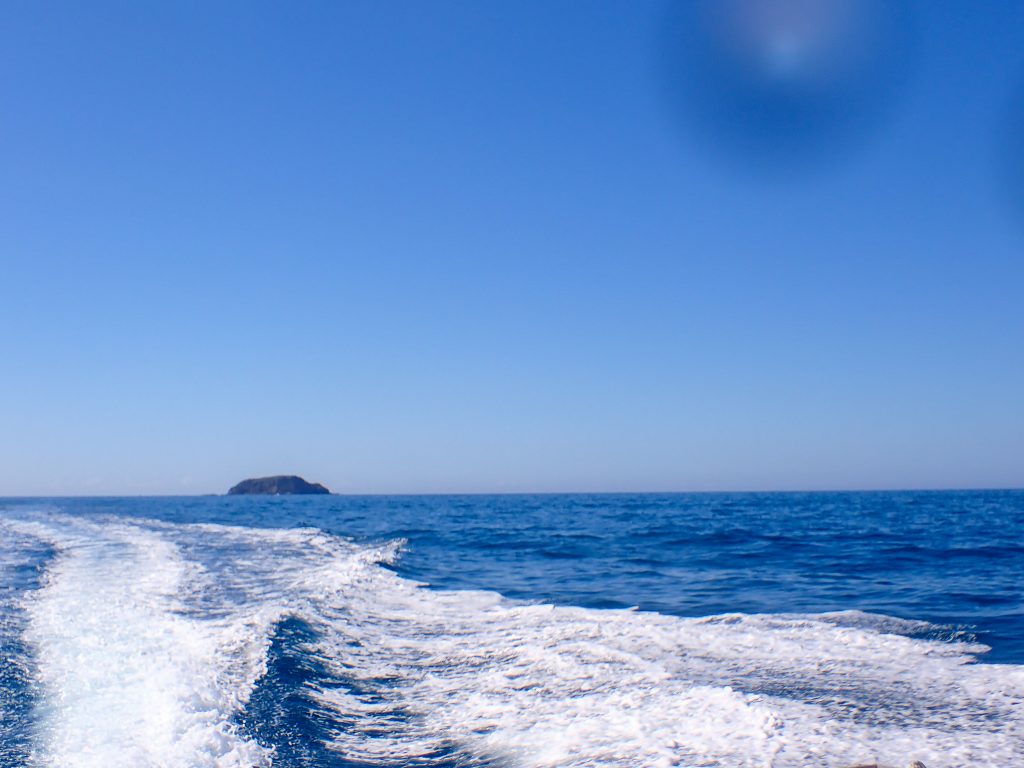
What I did see under the water was a lot of dead coral, so much dead branching Acropora spp.. Now dead from the bleaching back in February and March. I have estimated about one third of the area of coral has been lost across at the Keppel Islands. But not of all coral species, it is the Acropora spp. as plates but especially as branching, which have been most affected.
On the one hand it has been difficult to see so much death. But there is still so much life.
One of the highlights of the dive last Friday was to see two Epaulette sharks (Hemiscyllium ocellatum). One of them lay across an area of broken and mostly dead coral. My wide-angle photograph of the shark with buddy Jen photographing it allows some assessment of how much, and what all this dead coral looks like in this area at about 10 metres depth. And it was not easy to spot the shark, its natural colours merged with the algal infested coral.
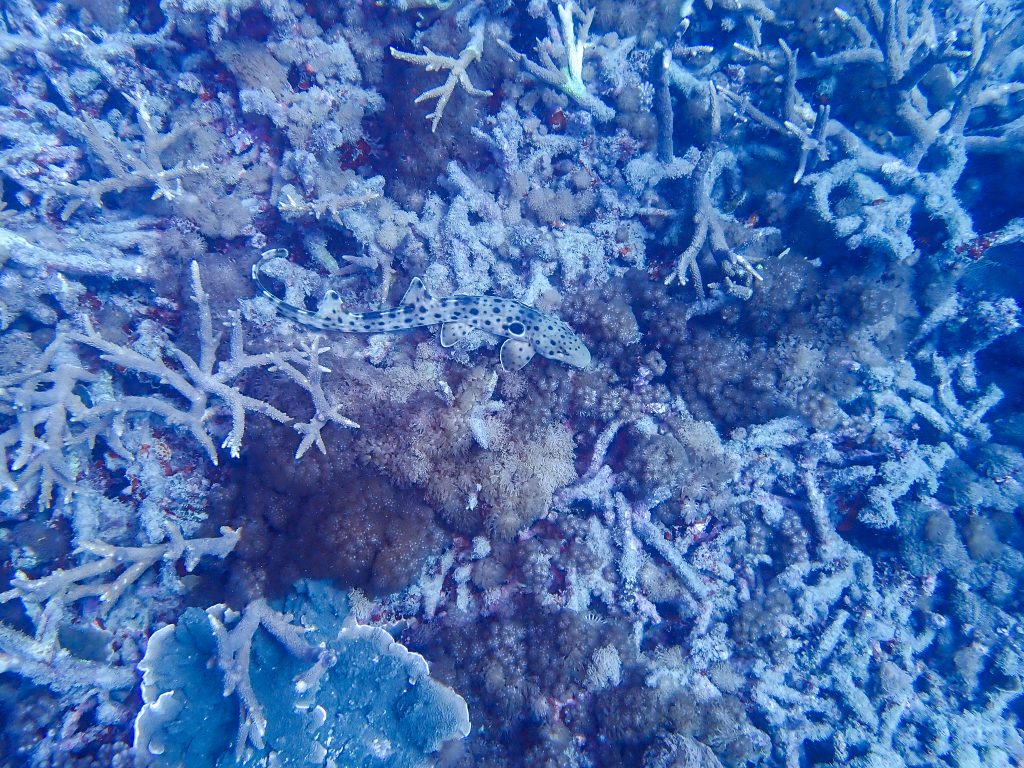
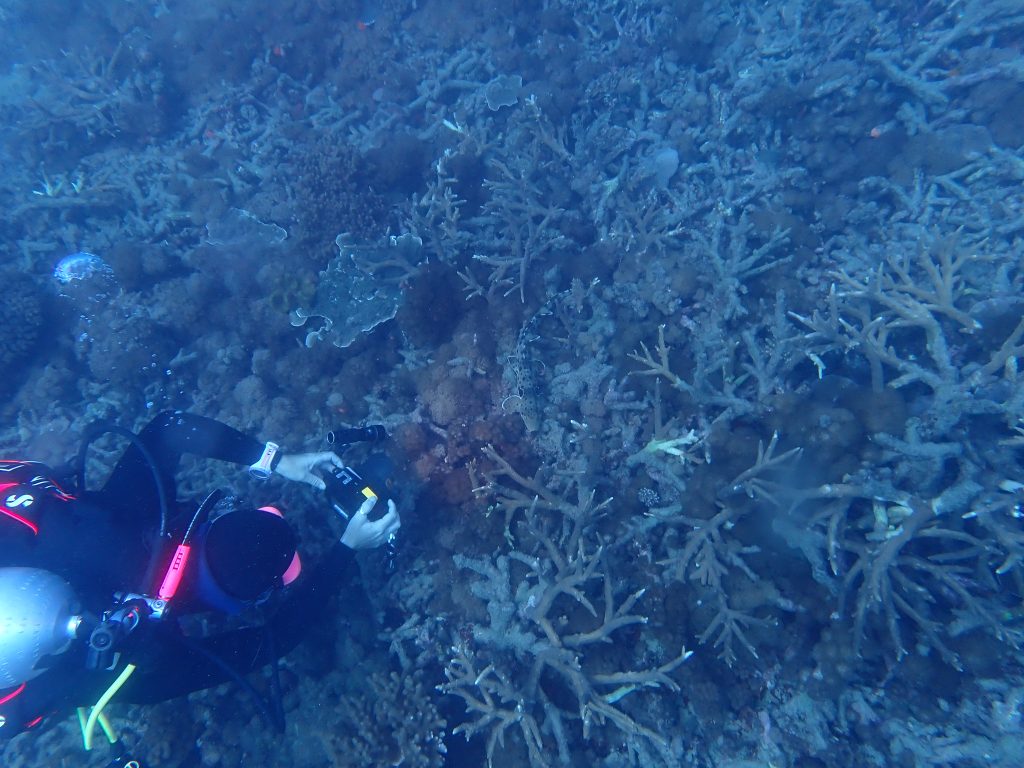
Stare long enough amongst the dead corals and you find all sorts of things, including nudibranchs. My photographs, wide angle and close-up, are of a gold and blue tiny Phyllidia ocellata.
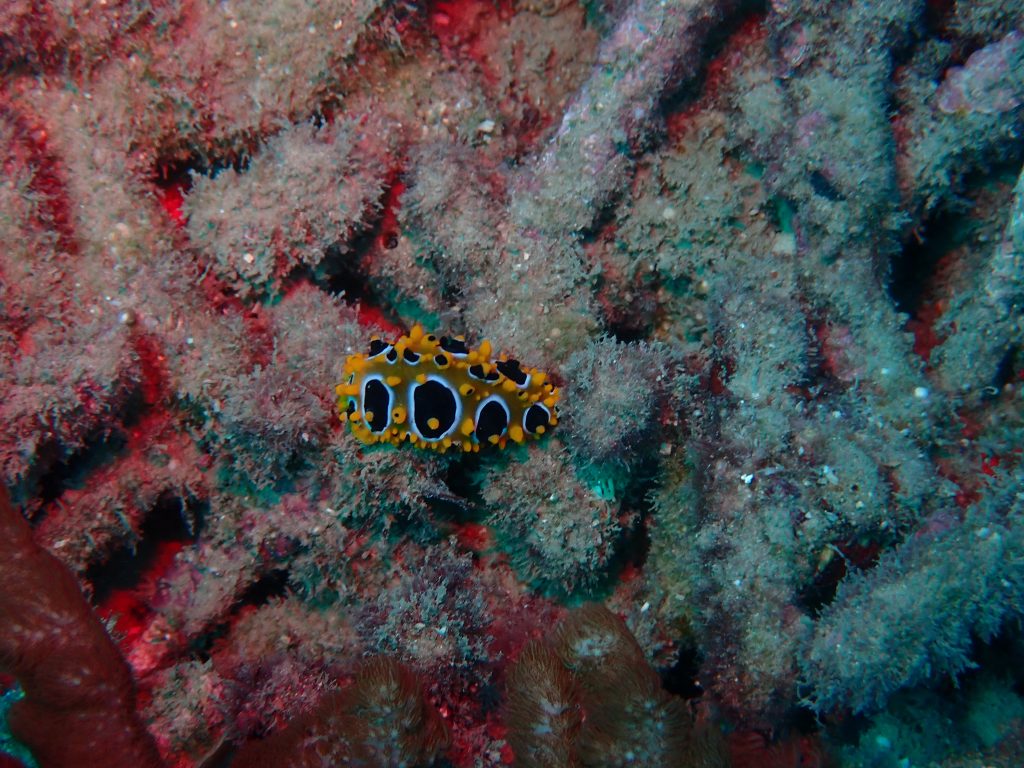
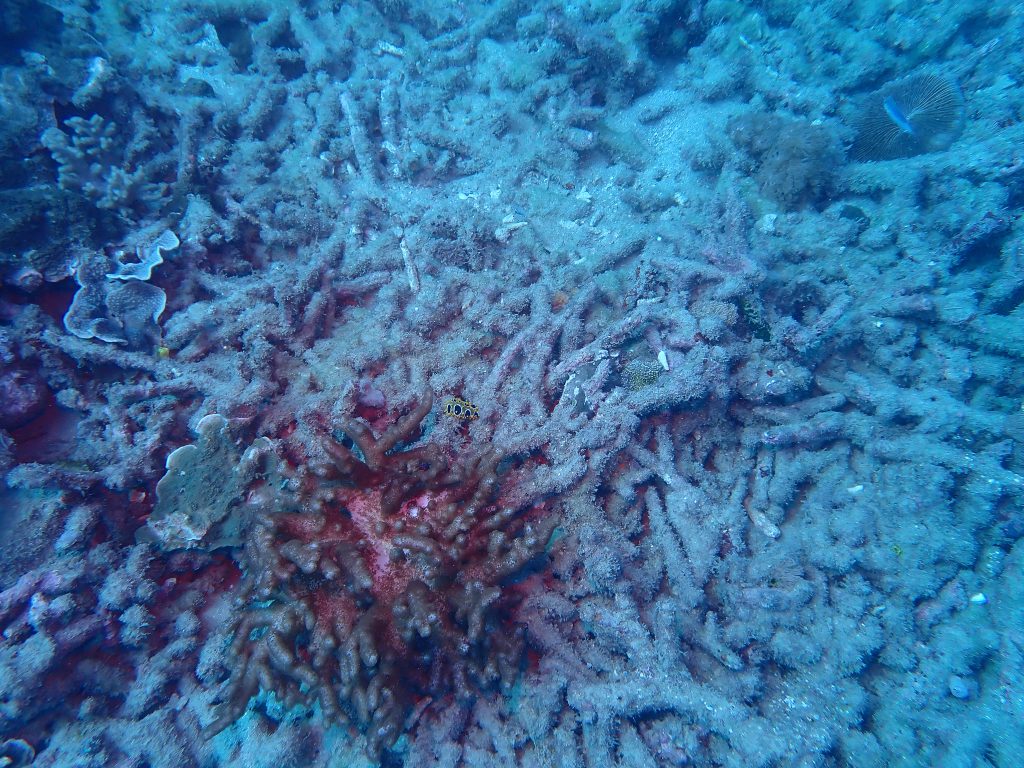
Around a corner I found that same sassy scribbled angel fish (Chaeotodontoplus duboulayi) that came right up to me a month ago, when I last swam this section of reef on 20th June. On Friday, again, the same fish came up and had a good look inside my face mask. Until I reached for my camera, and then it swam away.
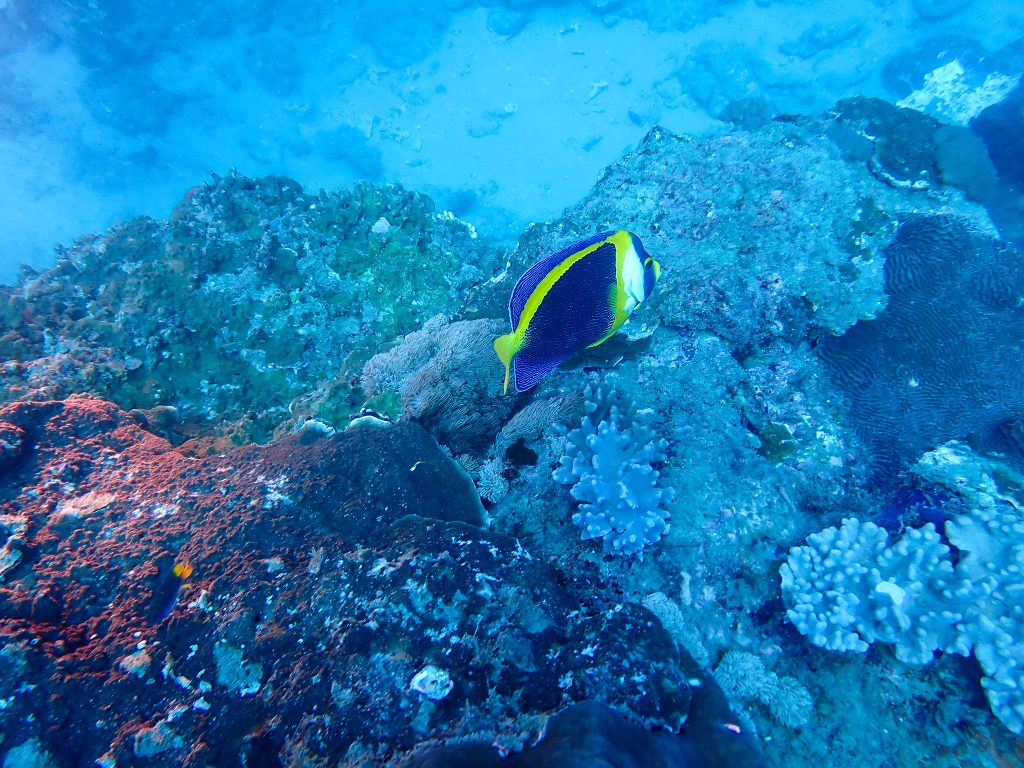
I put my camera down, and made some whales noises, and the fish came back and looked me in the eye, waving its head about the other side of my mask. How I wished, at that moment, I could have communicated that he was indeed a beautiful fish, and so fearless.
The other exceptionally beautiful animals that I saw underwater last Friday were the squid. Four of them, moving in unison, even staring at me in unison. They did everything as an evenly spaced foursome.
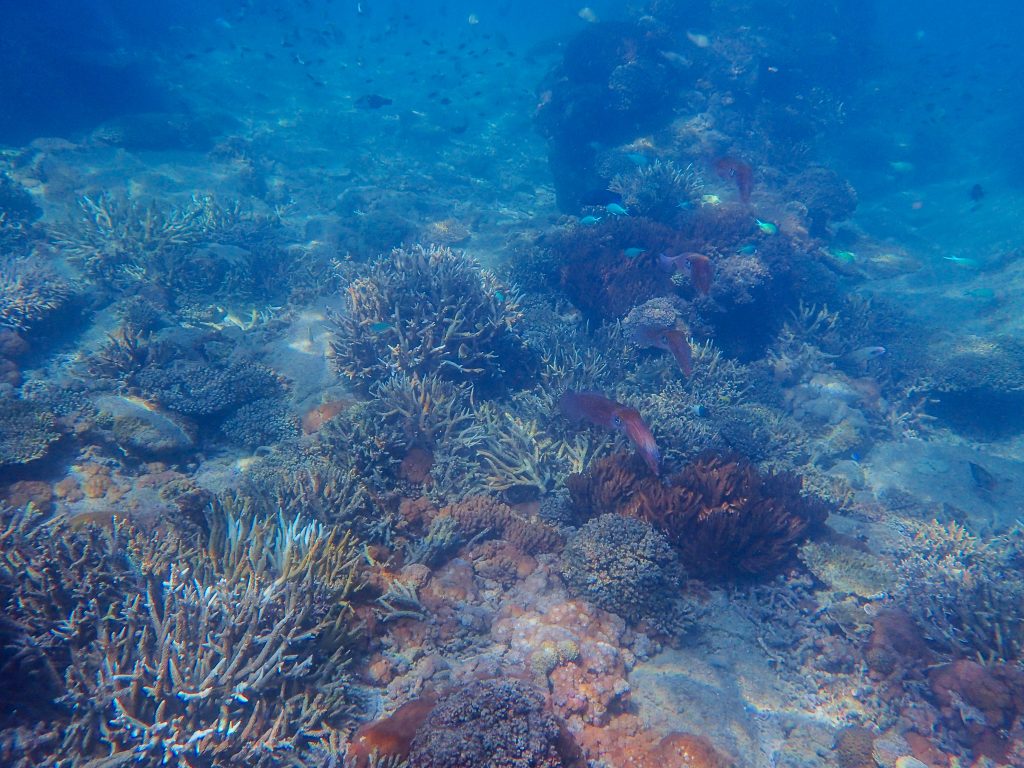
I checked on the expanding patch of bubble-tip anemone (Entacmaea quadricolor). Remember at this dive site – not far from the mooring. Where the branching Acropora spp. have lost to the macro-algae with the bubble-tip anemone (Entacmaea quadricolor) pushing through – taking over.
The dying coral, heavily infested with algae, is being replaced by this expanding mass of anemones dotted with blackback clown fish (Amphiprion melanopus). Most unexpectedly this apparently expanding mass of anemone is still stark white, but obviously very alive and keeping its tentacles clean of algae.
And so, the bleached anemone (Entacmaea quadricolor) with the help of its symbiotic clowns, is making the very most of the demise of the corals.
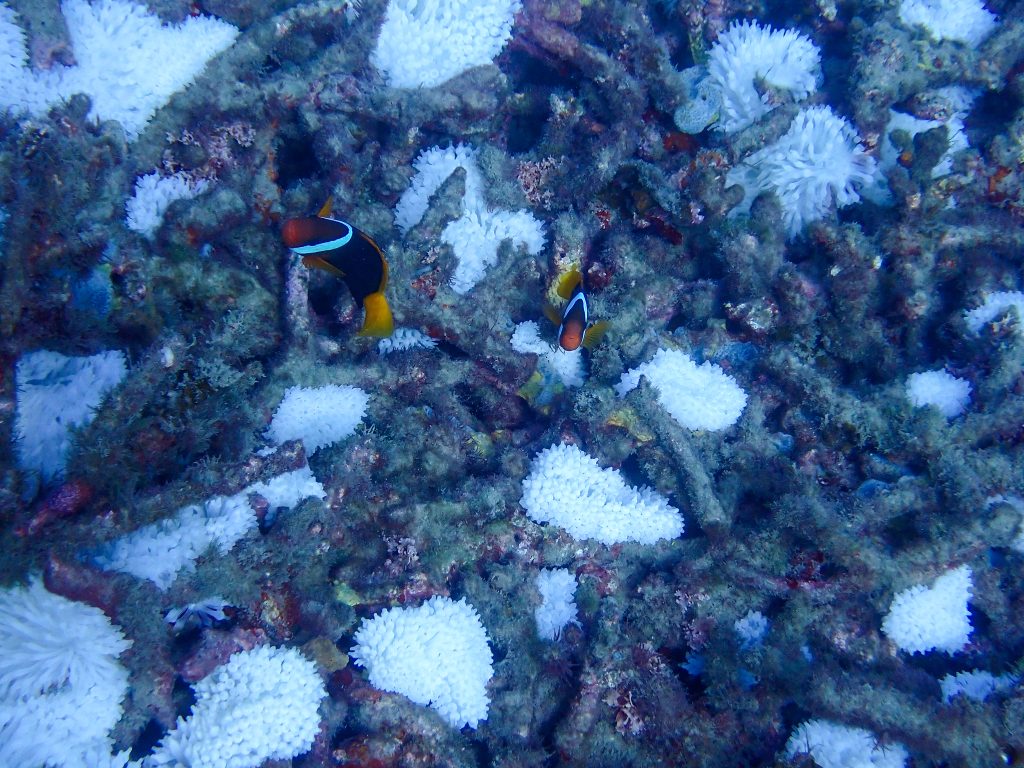
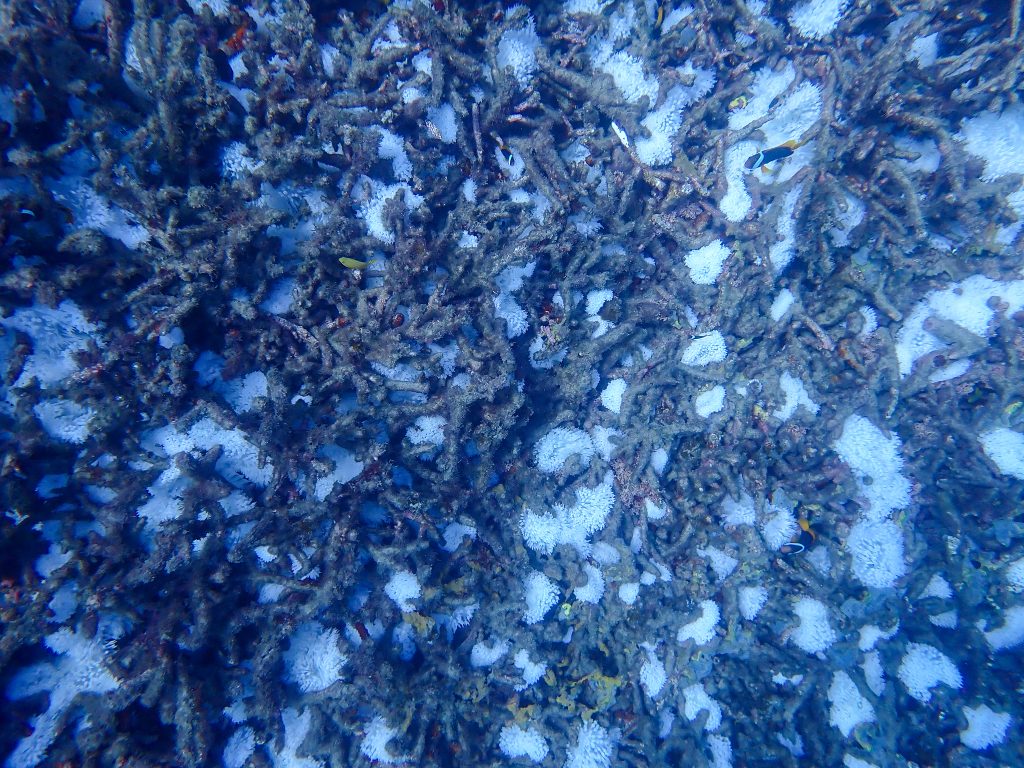
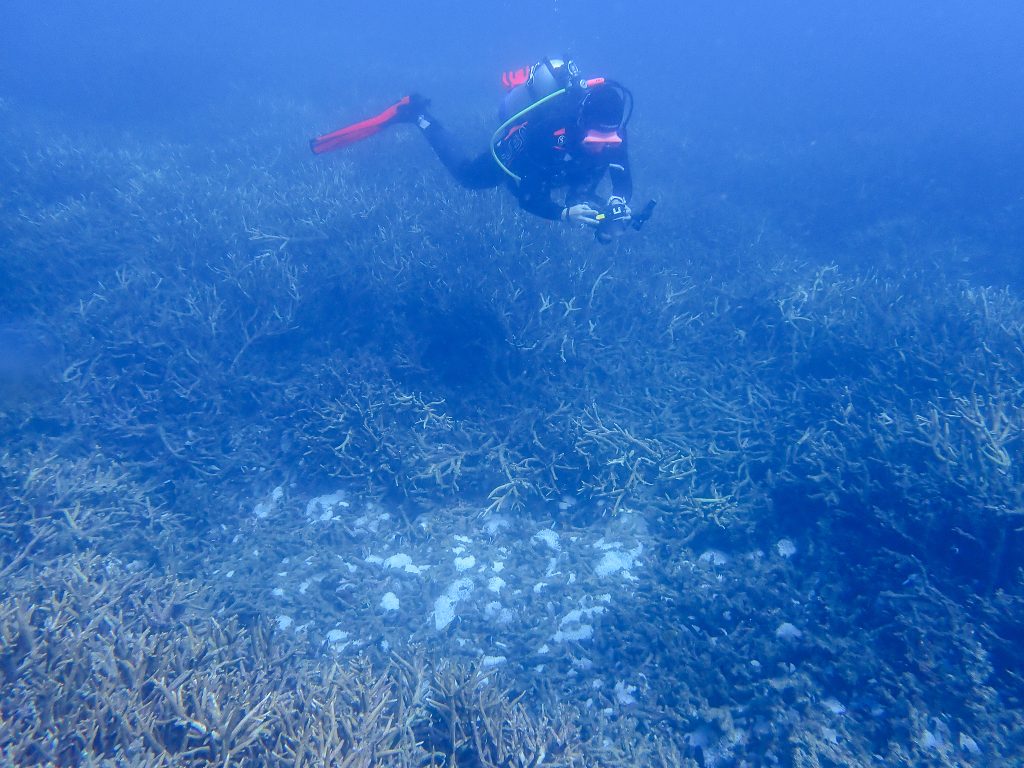


Indeed, coral cover may have reduced significantly at this reef, but species diversity is arguably on the rise.
I am very grateful to Keppel Dive, and especially my buddy Jenn (another one) for so many memories.


****
The feature image (very top) is of that angelfish, that is so curious. A scribble angelfish, Chaetodontoplus duboulayi

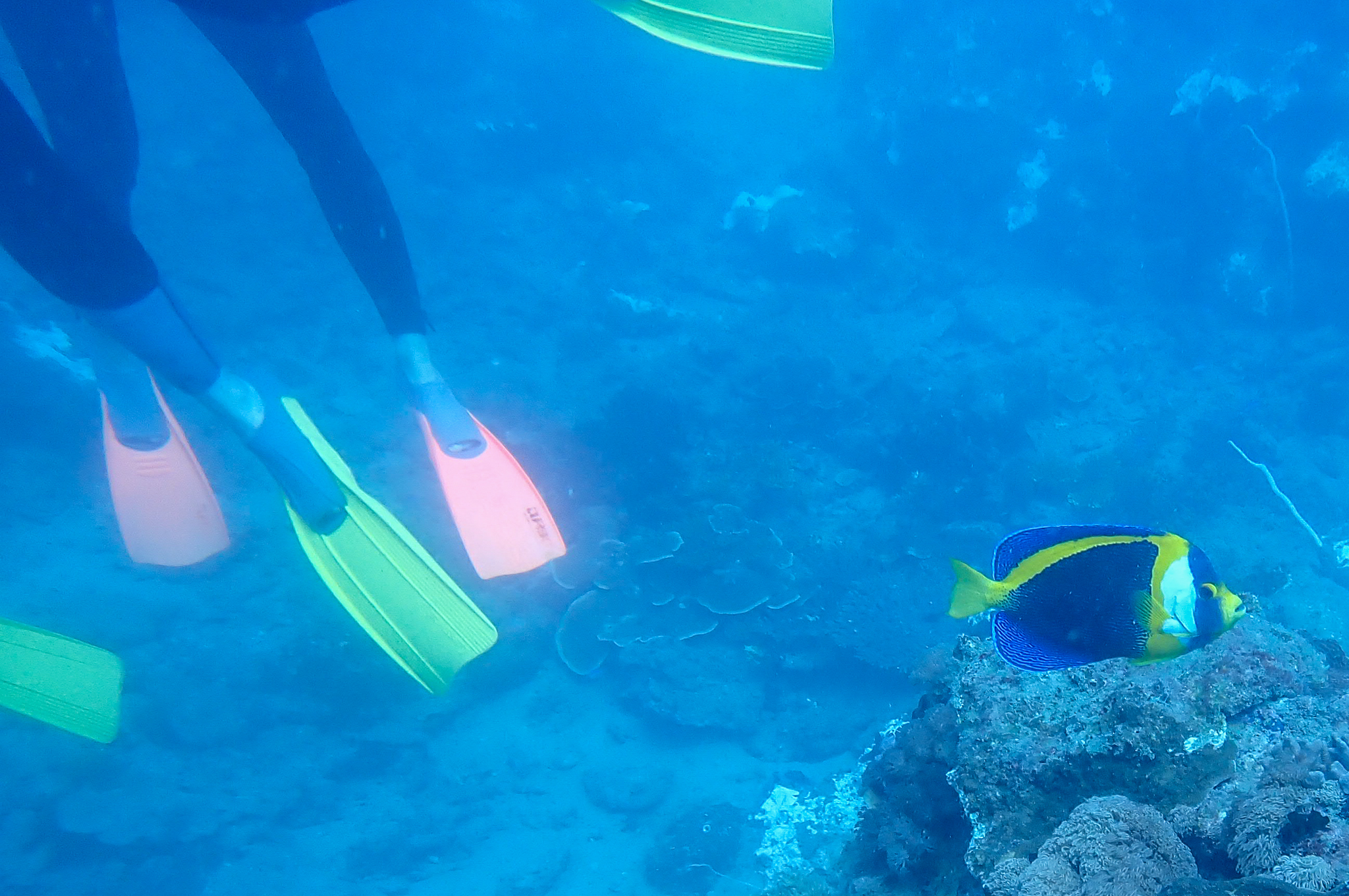
 Jennifer Marohasy BSc PhD is a critical thinker with expertise in the scientific method.
Jennifer Marohasy BSc PhD is a critical thinker with expertise in the scientific method.

Dang, Ms. J, don’t you know you’re not supposed to actually go out and look at the stuff that you’re studying. True scientists never do that, it might wreck their beautiful theories …
An outstanding piece of writing and exploration, as always.
In friendship and admiration,
w.
Wikipedia has a page for Cinnamon_clownfish. It mentions the white head band with no explanation.
An ideas? Maybe camouflage from the top?
Great work Jennifer; although I don’t know if its ‘work’ for you!
Excellent descriptions. What you are describing is the efficient functioning of the natural process of luxurious growth followed by damage by various mechanisms followed by recovery with the most competitive algae appearing first (that also provides food and habitats for fish, and many other fauna) followed in this instance by anenomes, and new corals will surely follow if they are not there already in some places. You mention the abundance of Acropora and their being most affected. Two things to note here. First, that abundance/dominance may have contributed to the loss and allows for a greater diversity of new corals to develop. In my earlier travels in other regions (Red Sea and Indian Ocean), admittedly a long time ago when reef research could only be done by going underwater (drones did not exist) it was certainly apparent that COTS for example (one of the focal points of my research) tended to go for areas of more widespread and dominant corals. Of course that could have been just coincidence and statistically not significant but it was quite noticeable. Second the physical structure of Acropora makes it more prone especially to storm damage – say compared with Porites and other more compact corals – but it is also quite fast growing so may be down, but certainly not out. It will be fascinating to see how there reefs do develop over the next few years. But one thing is for sure life there is robust. Any organism that can survive and prosper over some 450 million years has to be remarkably well adapted and flexible and is scarcely going to be bothered by a climate crisis that isn’t a crisis.
Considering reef recovery… what will the reef coral and fish diversity be like after repeated, devastating climate change bleachings? Dominated by Acropora and little else?
@ Karen K
Ask a silly question, get a straight answer — beautiful 🙂
Hi Karen
Thanks for your comment and question — for adding to the diversity and the discussion at this website.
I was diving Wreck Beach Reef and Bald Rock Reef on the weekend, both to the east of Great Keppel Island. I will do a post about this, before my next dive so perhaps Thursday evening.
There was so much dead coral especially at Wreck Beach Reef, and overwhelmingly branching Acropora spp., but also plates.
So, to repeat the conclusions from the above blog post based on four dives now at Outer Rock Reef, while coral cover is going to take a hit, coral diversity and species diversity more generally is increasing.
And it is my prediction that we are actually in a cooling cycle, that is the longer cycle with a 1.5 metre sea level fall since the Holocene High Stand, but for the moment the shorter cycle is warming of 40 centimetres since the Industrial Revolution. There are cycles within cycles, as I explain here: https://jennifermarohasy.com/2023/11/political-and-natural-hazards-arc-part-3/
You perhaps have it back-the-front in terms of likely impact of recent bleaching. The Acropora spp. is giving way to bubble tipped anemones, and other species of corals.
Cheers, Jennifer
@John Hultquist, I suggest you use Google Scholar with the following search terms “acropora reef diversity following bleaching”
Here’s some interesting research (there are many more):
https://link.springer.com/article/10.1007/s00338-007-0311-1
Karen,
Many people, me included, are skeptical of serious anthropological global warming or “climate weirding”, or what ever it is called this month. About 10 or 12 years ago a few people simply stopped following the increasingly wild claims. They have gone on to other topics. I enjoy learning from people such as Jenn, Susan Crockford, Ryan Maue, Roy Spenser, Kip Hansen, David Middleton, Tony from Oz, Cliff Mass, and others.
I am a “science reader” not a scientist, so my contribution is to lay a touch of sarcasm on the likes of ‘extinction rebellion’ and others that don’t understand the difference between Carbon, Carbon Dioxide, and Dihydrogen monoxide.
Regarding your link:
Corals, bleach, adapt, grow, and change!
Who knew?
That is of course the same Google that is self-appointed censor-in-chief and defenestrated Roy Spencer (de-monetised his app for voluntary contributions to his website that is full of interesting stuff) because he has the temerity to publish satellite data – that is utilised by serious scientists in preference to the highly distorted and manipulated surface sensor data – and which rather undermines the climate change scare story with its modest temperature increases. How dare he do that!!!! How dare he question as august an organization as the UN whose Chief (if one can really call him that) tells us without batting an eyelid that the oceans are boiling. Looks like Jennifer will need a refrigerated wetsuit for her next dive. Any ideas for the next Hollywood disaster movie?
Jenn should have delayed her Seattle trip, it was 36 degrees there a few days ago, 43 in Oregon.
@Peter Etherington-Smith, there is not always a conspiracy…
“Spencer’s Shenanigans – A recent sensible-sounding piece by Roy Spencer for the Heritage foundation is full of misrepresentations. Let’s play spot the fallacy.”
https://www.realclimate.org/index.php/archives/2024/01/spencers-shenanigans/